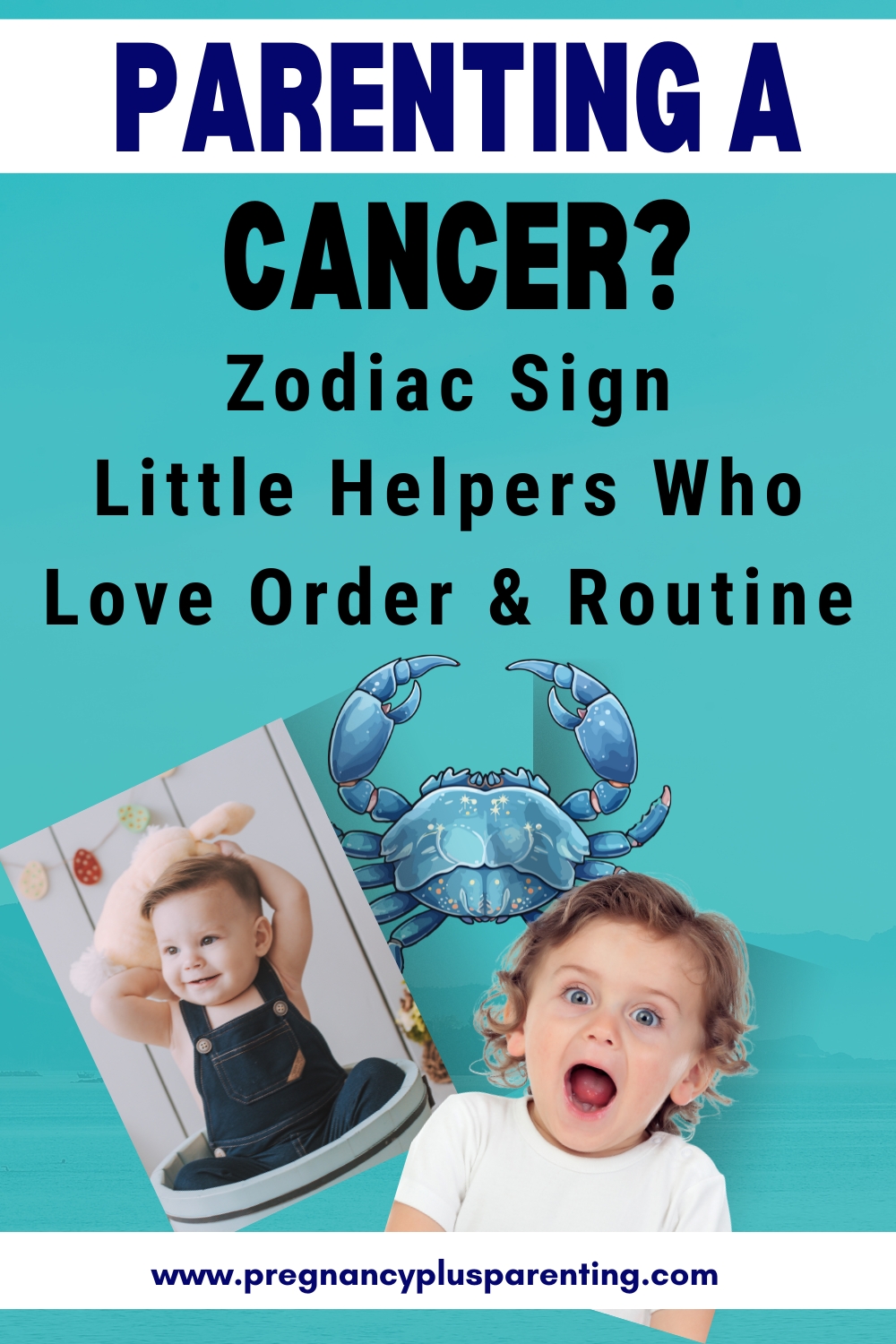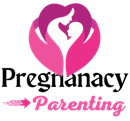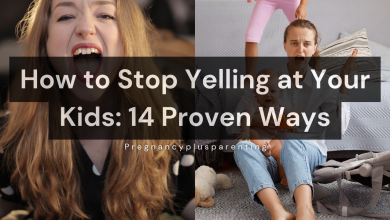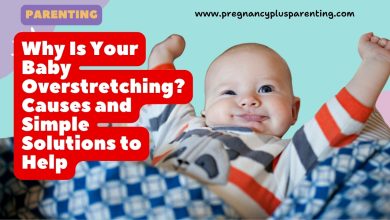Parenting a Cancer? How to Nurture Their Emotional Superpowers
If your child was born between June 22nd and July 22nd, then I warmly congratulate you on your Cancer baby!
What is the astrological assignment of the zodiac sign Cancer?
What does this zodiac sign’s birth chart hold for your child’s character? How will their ruling planet influence their behavior?
What characteristics characterize children born under the sign of Cancer?
What personality traits are characteristic of a Cancer child?
What preferences and inclinations will they have? What interests do Cancer babies pursue?
What should parents of Cancer babies consider when dealing with and raising them?
In this article you will find the answers.
Cancer Baby Horoscope – Astrological Assignment
Greek mythology has several stories about how the constellation Cancer came into being.
According to a tradition, the chief of the gods, Zeus, placed the crab in heaven to reward him for pinching a nymph to prevent her from escaping when Zeus wooed him.
Another myth says that a giant crab attacked the hero Heracles during his fight with the many-headed Hydra.
Heracles managed to crush the crab, but Hera, the wife of Zeus and goddess of marriage, placed him in heaven as a thank you.
Heracles was hated by the goddess because he was one of her husband’s many illegitimate children.
As a water sign, the zodiac sign Cancer symbolizes the original cycle from conception through
Pregnancy to birth as well as all cycles that have a beginning, a period of maturation and a conclusion.
• The astro name is Cancer
• The planet is the moon
• The element is water
• The colors are silver, white, green
• The lucky stones are white moonstone, emerald, pearls, jade, rose quartz, chalcedony, chrysolite
• The personification is the mother
Cancer Baby – How does the moon affect this zodiac sign?
This emotional zodiac sign is under the special influence of the moon and is also associated with the element of water.
The consequences are intense emotions and connections to the unconscious, deep forces of change and flowing cycles.
That’s why heartfelt sayings are perfect for those born under the sign of Cancer!
With Cancer children, you can never be sure whether their laughter will turn into tears the next moment, or vice versa.
They may also suddenly sulk or back out.
The moon has a particularly strong symbolic power in most cultures and usually represents the feminine and unconscious.
As their ruler, the Moon ensures that Cancer children experience constant mood swings, have a close connection to the subconscious, and are at home in the emotional world.
Those born under the sign of Cancer are sensitive and also highly sensitive children , sensitive but also vulnerable.
Therefore, in the first few weeks of acquaintance, you can easily get the impression that you can only approach them with kid gloves.
When Cancer people feel attacked or hurt, they retreat into seclusion and then need a lot of time to emerge again. A great deal of support and love are needed.
Cancer baby – what traits and character traits are typical?
More than with any other sign of the zodiac, direct physical contact with the mother and other caregivers is of paramount importance for Cancer babies.
Only with care, love and warmth do Cancer children develop enough basic trust for life and a healthy attachment style .
Cancer babies need a lot of sleep as babies and feel most comfortable when they can always suckle at their mother’s breast.
Well-behaved, affectionate and cuddly as they are, it is a piece of cake for them to melt hearts.
The breastfeeding bond between mother and baby is particularly close. The little crabs enjoy the skin-to-skin contact and the peace and quiet that the mother also enjoys while breastfeeding.
Your Cancer baby may later feel like a strange being in the harsh reality.
Secretly or subconsciously, your child will probably always long for the unconditional love they can count on from you.
Great need for security and belonging
Children born under this zodiac sign are characterized by a strong bond with their families.
They have a strong need to feel like they belong, also because this gives them support and the expectation of protection.
Because they are surrounded by flowing elements, they instinctively look for a solid anchor.
These babies tend to be unfamiliar not only during the acute phases of developmental spurts , but also have difficulty with unfamiliar people in general.
So it’s best to ask someone to babysit who has already gotten to know the child well and who you know will be accepted by the child.
To satisfy the need for belonging outside of the family circle, you can consider joining a playgroup with your little Cancer .
There, the child can make their first social contacts in a manageable setting and in a comfortable environment and is also prepared for daycare.
When they feel safe, Cancer children are completely absorbed in play, because their vivid imagination and strong ingenuity blur the boundaries between dream world and reality.
Shy and cautious
Because Cancer people are particularly sensitive and characterized by great vulnerability, they learn early on that they must protect themselves from the often harsh world.
The popular saying “tough shell, soft core” applies particularly well to this watermark.
You should be suspicious if a Cancer child becomes completely silent, as this is a way of protecting themselves.
Then it is important to look for the causes of this behavior and, if necessary, eliminate them.
Sensitive, loyal and intuitive
Thanks to their considerable empathy, Cancer children are already able to intuitively sense the feelings and moods of others.
When they meet new people, they initially react shyly and need a while to warm up.
But once they have gained trust and confidence, even small crabs tend to treat their playmates with care, even mother them.
Once their shell has been cracked out of caution, they amaze those around them with their unconditional loyalty.
Since they take everything to heart, it is always advisable to treat them gently.
No wonder they awaken protective instincts in others, even though they like to care themselves.
Indirect and persistent
However, one should not necessarily imagine the irresistible, highly lovable Cancer children to have compliant personalities.
Appearances can be deceiving. While small crabs are sensitive, they are also surprisingly resilient and tough.
Similar to the Cancer walk, they usually achieve what they set out to do indirectly and then proceed cautiously.
Their innate patience is a great advantage. While strictness and harshness are alien to Cancers, the same is certainly not true of ambition.
Cancer baby – preferences until toddlerhood
The enormous imagination and vivid fantasy of Cancer children also affects their outstanding creativity.
They are naturally prone to unusual ideas, funny leaps of thought and a lively play of associations.
Bookworms by nature
This creativity should be encouraged from an early age.
It is no coincidence that Cancer babies show great interest and a pronounced preference for books of all kinds, from fairy tales to seek-and-find books to tiptoi.
Children as young as three can be trusted to read books much earlier.
Role-playing games create excitement
Acting out a story or fairy tale is a lot of fun for the little crabs.
Provided, of course, that they do this with mom and dad or with close friends, since they have difficulty coming out of their shells in an environment that is unfamiliar to them.
However, your Cancer child will enjoy puppet and children’s theater shows from an early age.
If they get the chance to put on a costume themselves, they will really blend into the new role and probably also show off their acting talent.
Cancer children often don’t even need playmates for role-playing; they become inventive. Many Cancer people had imaginary friends in their childhood.
All sorts of creative things, little sport
Whether painting or crafting, braiding and threading or even exploring and learning to play musical instruments – Cancer children thrive in all creative activities.
And when they bake cookies with their parents, amazing creations emerge.
Children born under the sign of Cancer are generally not very athletic. The exception is water sports.
Even as babies they love to splash around in the water and can later become great swimmers or even divers.
Because they are close to nature, prefer to be outdoors and have great intuition and empathy, Cancer children are particularly fond of horses and can become passionate riders.
Cancer Baby – During School Years
It is not uncommon for developmental delays in children with cancer.
Parents should not worry if their child starts school later, because Cancer children withdraw under pressure and have difficulty with performance-oriented thinking.
But since they are not without ambition, they quickly make up for lost time as soon as they feel the urge from within.
Their reserved nature helps them stay out of the way at school. They use this to explore their surroundings. However, as soon as they have to assert themselves, they lose out.
Once they have gained trust in certain schoolmates, they shed their reserve and instinctively and intuitively build few, but good and deep friendships.
Cancer children learn best when they can use all of their senses.
They have no difficulty with the learning material as long as they can understand it and have a good relationship with the teacher.
A sensitive caregiver at school can do a lot to help the Cancer child show greater commitment.
Even though they have a strong imagination, Cancer children have difficulty with abstract representations and concepts.
This is because they think in images. Their vivid way of expressing themselves and their excellent memory compensate for this aforementioned disadvantage.
The musical sense and creative talent of Cancer children become a source of pure joy when they receive proper support. This also greatly benefits them in their career choices.
Due to their character traits, they tend towards creative and artistic careers and become writers, painters or musicians.
With their empathy and intuitive understanding of mental health issues, they also have good qualifications for psychological and therapeutic professions.
And thanks to their natural willingness to help, they also enjoy working as educational professionals, nurses, doctors and social workers.
Cancer Baby – Tips for Parenting
Parents of a Cancer baby are best advised to distance themselves from strict parenting methods right from the start and instead arm themselves with sensitivity and patience.
Only in a loving and understanding environment will the child born into this fickle zodiac sign thrive.
Consistent pursuit of educational goals is important, but should not be accompanied by high demands or even compulsive adherence to principles.
Cancer children react to pressure and insensitive criticism by withdrawing and escaping into their dream world.
But that doesn’t mean that you shouldn’t set limits and guidelines, as you would with the permissive parenting style .
On the contrary, you should introduce your Cancer child to household chores from an early age and teach them the importance of order and structure.
This way, your little dreamers will come into contact with the sober reality while they are still three or four years old.
With your loving support, it learns the necessity of order and discipline.
If you slowly but consistently give your child age-appropriate, easy-to-manage tasks, they will learn to take responsibility at an early age.
This will certainly be of great benefit to them later on, as they will need independence and self-reliance in life.
Don’t forget to praise the little crab for the work he does.
Experiences of success boost his self-confidence, while recognition can encourage him to have even more confidence.
In order for Cancer children to be open to the finest moods, a pleasant family atmosphere is of paramount importance for their positive development.
Tense relationships, unspoken accusations and similar negative vibrations affect them more than other signs of the zodiac.
If one of the parents is thinking about separating , this should be explained to the child in an age-appropriate manner, or at least the parents should talk openly about conflicts and disagreements and urgently try to find a way to deal with each other respectfully.
Sensitive little Cancers can also imagine insults and rejections or misunderstand actually loving teasing, especially if the tone is wrong.
Therefore, you should also encourage siblings to be sensitive.
Because when sensitive beings get the idea that they are not understood and appreciated, they retreat into their shell and can then remain in withdrawal for a very long time.
As a result, they become resentful loners.
Final thoughts
Cancer children capture hearts with their cuddly and affectionate nature. Defiant behavior and childish aggression are foreign to them.
Children born under the sign of Cancer, on the other hand, are sensitive, shy and withdrawn.
A loving and calm family atmosphere is especially important for Cancer children, who often seek cuddles and physical contact.
Especially as babies, they need close attachment to develop enough confidence and trust.
This article is about the nature and character traits of children born under the zodiac sign of Cancer: Thanks to the element of water, they are sensitive and intuitive, imaginative and creative.
They are also cautious when dealing with new people, although they have a strong need to belong.
Here I have also given some tips for raising a Cancer child, who, by the way, needs a lot of time alone.
You will also find tips on how you can encourage and support his special interests and talents.
When dealing with small Cancers, a lot of sensitivity is required, because these little idealists can react oversensitively under unfavorable influences and withdraw into their shell.
The zodiac sign Cancer is a water sign, so little Cancers have some similarities with Pisces babies and little Scorpios and are very different in nature from, for example, Capricorn babies or Virgo children .
Note: A birth horoscope is not a psychological report, but describes personality traits and development possibilities based on astrological observations and experiences







